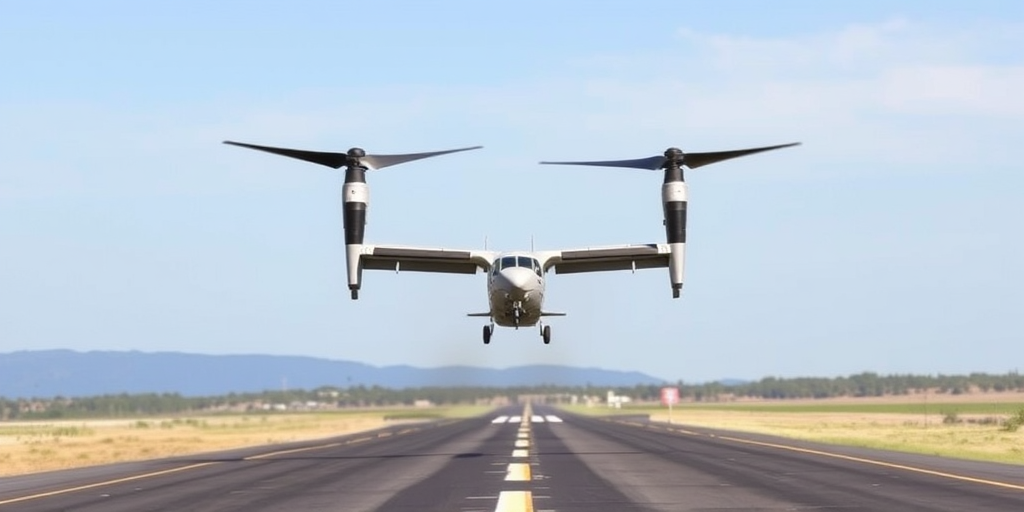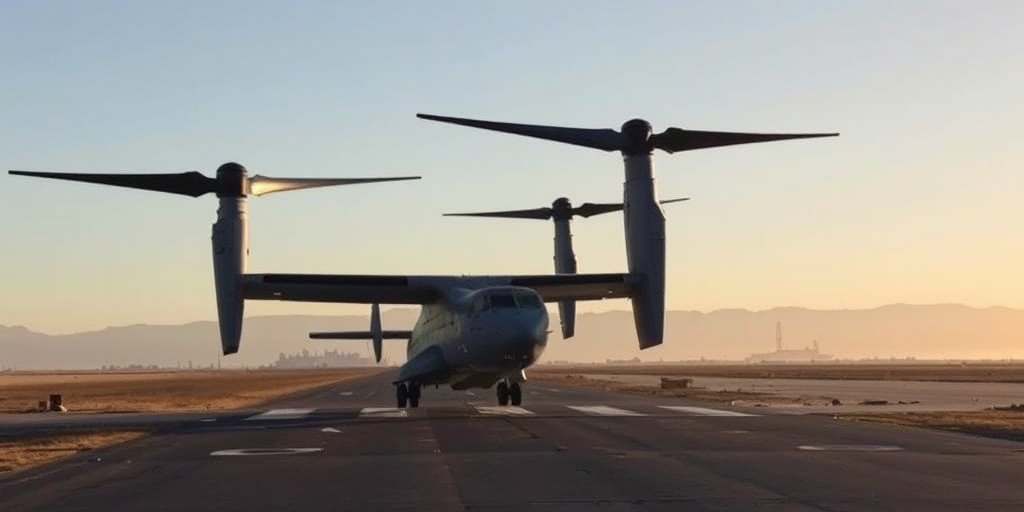Have you ever imagined an aircraft that blurs the line between a helicopter and a fighter jet? The Osprey V-22 shatters conventional aviation norms with its tiltrotor system, merging vertical lift with speeds exceeding 200 knots in airplane mode. In this deep dive, we unravel its revolutionary design, operational versatility, and the cutting-edge mechanisms that empower global mobility. Join us as we explore how this engineering marvel reshapes tactical air support and sets a new standard in military aviation technology.
Historical Development and Evolution of The Osprey V-22: Tiltrotor Power in the Skies

Q: When did the development of the Osprey V-22 begin?
A: The development began in the 1980s following Operation Eagle Claw.
The Osprey V-22 emerged from a period of intense innovation and hybrid development. Initially leveraging the XV-15 demonstrator—with its inaugural hover in March 1988—the program set out to merge the vertical lift of helicopters with the high-speed performance of fixed-wing aircraft. This conversion process led to the creation of multiple variants, including the MV-22 for Marine transport, the CV-22 for Air Force special operations, and the CMV-22B for Navy replenishment.
Over the ensuing decades, critical program milestones have defined the evolution of the platform. Noteworthy incidents have served as catalysts for design refinements and safety enhancements. For example, the June 2022 crash attributed to clutch failure and the November 2023 training mishap off Japan—with detailed chip burn advisory warnings—highlighted potential vulnerabilities in the system. These events underscored the need for robust monitoring systems and a reevaluation of component resilience during the complex transition between flight modes.
Each milestone in its historical development has shaped the intricate engineering behind the tiltrotor mechanism and influenced the operational requirements of the aircraft. The evolution from a promising demonstrator to a multifaceted combat and logistical asset reflects continuous improvements driven by both technological breakthroughs and hard-earned lessons from field experience. This ongoing process has forged an aircraft that remains a cornerstone in modern military aviation while serving as an enduring example of hybrid development in action.
Operational Performance and Real-World Applications of The Osprey V-22: Tiltrotor Power in the Skies

Q: What operational incident demonstrates the Osprey’s multi-mission strategy?
A: The November 2023 training mission off the coast of Japan.
In November 2023, the Osprey executed a complex training mission off the coast of Japan that showcased its impressive VTOL capabilities and operational flexibility. During this exercise, chip burn advisories triggered emergency protocols, leading to a high-stakes situation where an emergency landing was required. Despite favorable options nearby, the aircraft executed a calculated maneuver to a designated airfield 15 minutes away. The incident further escalated into a rescue operation that spanned 48 days, with the hull later recovered from a 30-meter depth. This event underlines the aircraft’s rapid vertical takeoff and landing abilities, alongside its effectiveness in high-speed mode enabling swift transit during critical missions.
- Rapid vertical takeoff and landing
- High-speed conversion for transit
- Multi-role operational flexibility
- Critical incident response and rescue operations
- Field performance under diverse environments
These tactical applications highlight why the Osprey is valued for air assault design and combat support roles. Each element—from its dual-mode capability to its resilience under adverse conditions—cements the Osprey as an exemplary platform for both air assault and logistical missions.
Future Prospects and Legacy of The Osprey V-22: Tiltrotor Power in the Skies
Q: What are the main future prospects for the V-22 Osprey?
A: The V-22 is poised for refined rotor designs, extended mission capabilities, and enhanced control systems.
Looking ahead, ongoing debates spotlight the critical need for next-generation improvements that further bolster both operational safety and fleet modernization efforts. Historical incidents, combined with emerging simulation advancements, continue to influence these discussions, steering innovations in rotor refinement and control enhancements.
Enhanced rotor designs promise to improve aerodynamics and efficiency while extending the aircraft’s mission envelope. Advanced control systems, tightly coupled with simulations, aim to reduce technological risks and elevate defense benchmarks, ensuring that global mobility remains uncompromised during complex operations.
Future roles for the V-22 include contributions to rapid response strategies, multi-environment adaptability, and sustained operational readiness for increasingly diverse combat scenarios through integration with fleet modernization initiatives.
- Future roles in extended mission versatility
- Fleet modernization via integrated control system upgrades
- Aerospace feats achieved through refining rotor designs
- Technological risks mitigated by advanced simulation and analysis
- Defense benchmarks set through continual innovation and rigorous testing
These targeted developments underscore the enduring legacy of the V-22 as a transformative force in military aviation, merging past lessons with innovative prospects for future operational excellence.
Final Words
In the action, we explored design innovations, historical evolution, and operational performance.
We analyzed technical specifications and safety aspects while addressing future prospects.
The detailed breakdown covers everything from VTOL capabilities to advanced fly-by-wire systems.
This provides a thorough understanding of The Osprey V-22: Tiltrotor Power in the Skies.
Each section interweaves real-world challenges with measurable advancements, illustrating both achievements and lessons learned.
The narrative leaves us with a positive view on the aircraft’s transformative legacy and promising future.
FAQ
What makes the V-22 Osprey unique among military aircraft?
A: The V-22 Osprey combines helicopter and fixed-wing capabilities through its revolutionary tiltrotor system, enabling vertical takeoff and landing while achieving speeds over 200 knots in airplane mode.
What is the primary mission of the V-22 Osprey?
A: The V-22 Osprey performs diverse military operations including rapid air assault, troop transport, and logistical support missions, utilizing its unique ability to transition between helicopter and fixed-wing flight modes.
What is the maximum speed of the V-22 Osprey?
A: The V-22 Osprey exceeds 200 knots in airplane mode, significantly outperforming traditional helicopters while maintaining vertical takeoff and landing capabilities.
How does the V-22 Osprey’s tiltrotor system work?
A: The Osprey’s tiltrotor mechanism uses a fly-by-wire system that rotates engine nacelles between 80° and 97.5°, allowing transition from helicopter mode to airplane mode during flight.
What are the key safety features of the V-22 Osprey?
A: The V-22 features triple-redundant safety systems, including three chip detectors per proprotor gearbox, advanced fly-by-wire controls, and comprehensive monitoring systems for critical components.
What propulsion system powers the V-22 Osprey?
A: The V-22 Osprey utilizes dual Rolls-Royce turbine engines, powering 11.6-meter diameter proprotors with 47° blade twist for optimal flight efficiency.
How has the V-22 Osprey evolved since its development?
A: Since its 1980s development, the V-22 has evolved into multiple variants including the MV-22, CV-22, and CMV-22B, with continuous improvements in safety systems and operational capabilities.
